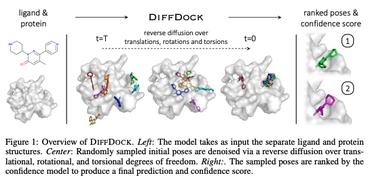Shape Complementarity Optimization of Antibody-Antigen Interfaces: the Application to SARS-CoV-2 Spike Protein
Many factors influence biomolecules binding, and its assessment constitutes an elusive challenge in computational structural biology. In this respect, the evaluation of shape complementarity at molecular interfaces is one of the main factors to be considered. We focus on the particular case of antibody-antigen complexes to quantify the complementarities occurring at molecular interfaces. We relied on a method we recently developed, which employs the 2D Zernike descriptors, to characterize investigated regions with an ordered set of numbers summarizing the local shape properties. Collected a structural dataset of antibody-antigen complexes, we applied this method and we statistically distinguished, in terms of shape complementarity, pairs of interacting regions from non-interacting ones. Thus, we set up a novel computational strategy based on \textit{in-silico} mutagenesis of antibody binding site residues. We developed a Monte Carlo procedure to increase the shape complementarity between the antibody paratope and a given epitope on a target protein surface. We applied our protocol against several molecular targets in SARS-CoV-2 spike protein, known to be indispensable for viral cell invasion. We, therefore, optimized the shape of template antibodies for the interaction with such regions. As the last step of our procedure, we performed an independent molecular docking validation of the results of our Monte Carlo simulations.
PDF Abstract
